Banker of the Year: Citizens Bank's Bruce Van Saun
Once struggling to remain relevant, the Providence, R.I., bank is now an industry standout. Inside the story of its resurgence.
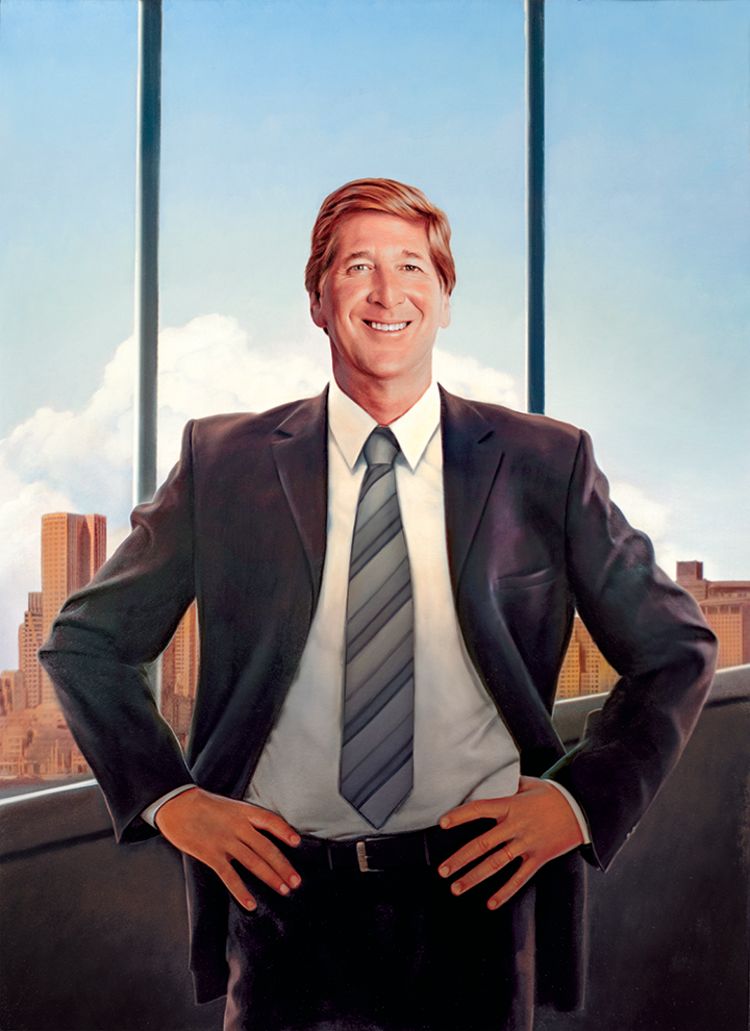
By Alan Kline
When Bruce Van Saun took over as chief executive of Citizens Financial Group in late 2013, the Providence, R.I., company was fading into irrelevance.
By then, most regional banks that had been hobbled by the financial crisis were back in growth mode after a long period of retrenchment.
An exception was Citizens, whose parent company at the time, Royal Bank of Scotland, had all but stopped investing in its U.S. operations since being seized by the British government five years earlier.
While its competitors were ramping up lending, pursuing new revenue sources and investing in technology aimed at improving service and efficiency, Citizens was going in reverse. Total assets had shrunk by 25% from pre-crisis levels and the bank unit was losing deposit share in several of its key markets, including Boston and Philadelphia.
A lot has changed in six years. Under Van Saun and his management team — and thanks in no small part to its well-timed spinoff from RBS — Citizens today is a thoroughly transformed company.
Its commercial loan portfolio is growing faster than the industry average as the bank has moved into new markets, invested in new business lines and added a host of new fee-based services that have helped it attract larger, more sophisticated corporate clients.
Home and consumer lending are thriving too, following a fortuitous acquisition of a mortgage lender, the expansion of its student lending program and a bold foray into point-of-sale financing for products such as iPhones, home security systems and, most recently, Microsoft’s Xbox.
And Citizens, once a tech laggard, is now seen as an innovator. A standalone, digital-only bank it launched in mid-2018 has already amassed nearly $6 billion of deposits and attracted customers in all 50 states.
For his leadership in positioning Citizens as a regional bank with staying power, Van Saun is American Banker’s Banker of the Year for 2019.
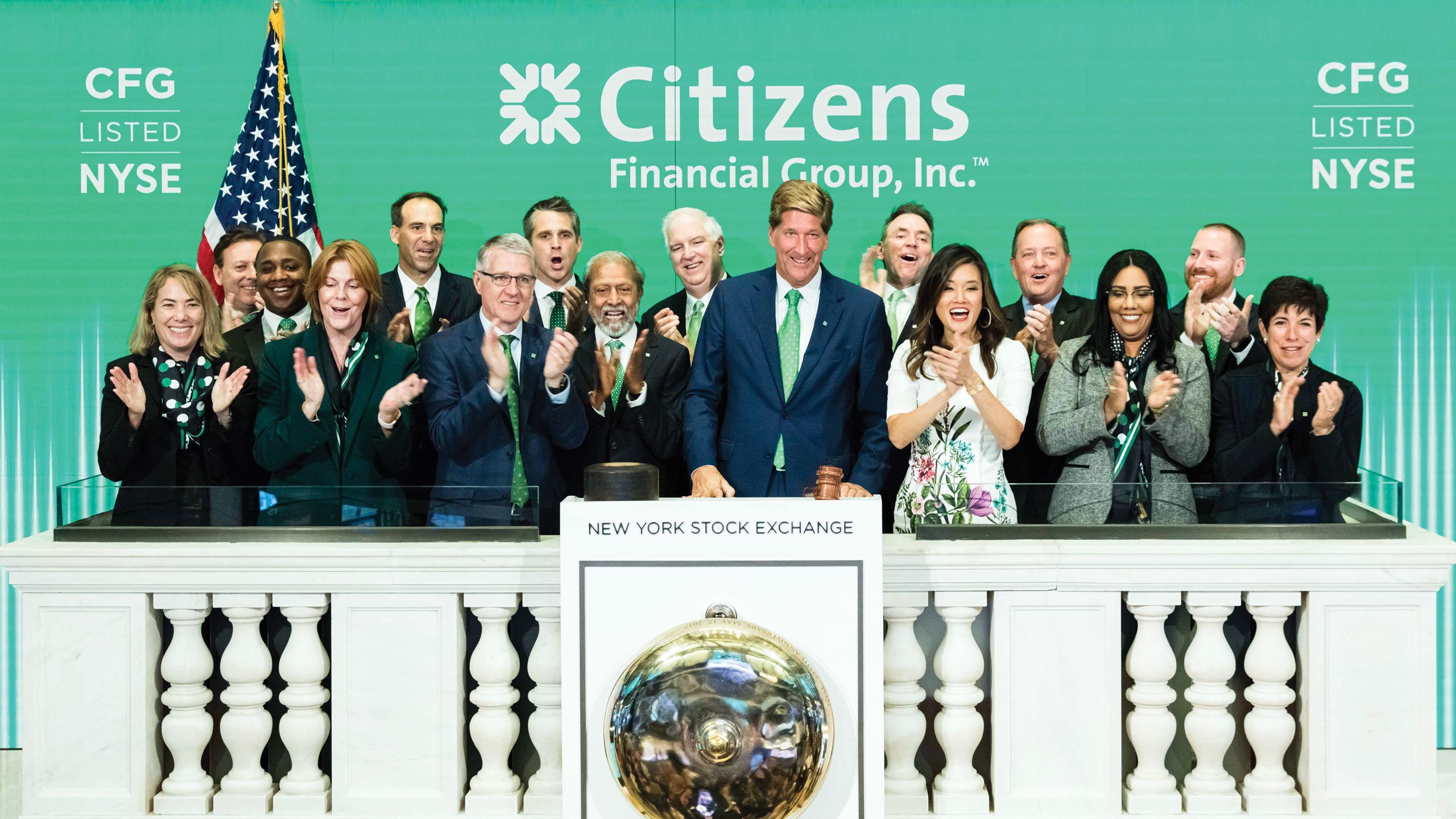
Surrounded by other Citizens executives, CEO Bruce Van Saun rings the closing bell of the New York Stock Exchange on Sept. 24, the fifth anniversary of the company's initial public offering.
Surrounded by other Citizens executives, CEO Bruce Van Saun rings the closing bell of the New York Stock Exchange on Sept. 24, the fifth anniversary of the company's initial public offering.
The success of the turnaround is evident in the numbers. Total assets have rebounded to pre-crisis levels, at nearly $165 billion as of Sept. 30, and key profitability metrics, such as efficiency ratio and return on tangible common equity, have significantly improved, especially in the last two years.
It’s evident, too, in Citizens’ rising employee engagement and reputation scores. In American Banker’s most recent reputation rankings, only two U.S. banks scored higher with customers than Citizens.
Van Saun, 62, is the first to admit that Citizens “has work to do to become the top-performing bank we aspire to be.”
He noted that Citizens’ fee income as a percentage of revenue, while improving, still lags its peers. He also said the bank needs to upgrade some of its technology to cut costs and speed delivery of services so that it doesn’t lose ground to deep-pocketed rivals like Bank of America and JPMorgan Chase. “We’re good compared to where we were, and we’re good compared to other regionals, but we have to keep our eye on the megabanks,” he said.
Still, in a year in which some large and midsize banks have opted to join forces in hopes of better competing with those giants, Van Saun said he believes Citizens can continue to thrive by sticking to what’s been working for the last six years: hiring good leaders and staying relentlessly focused on the needs of the customer.
“If you’re a trusted adviser to individuals on their life journey or to companies navigating business challenges, if you show up at every touchpoint with good ideas that add value to the relationship, then they have no reason to move away from you,” Van Saun said.
Largest-ever bank IPO
After Van Saun arrived at Citizens, one of his first big decisions in advance of the September 2014 initial public offering was selling roughly 100 Chicago-area branches, as well as small-business operations and select middle-market relationships in the region, to U.S. Bancorp for about $315 million.
Citizens had struggled to capture market share in Chicago since entering the city with its acquisition of Charter One Bank 10 years earlier, and a sale would allow the company to invest the proceeds into other areas, Van Saun said.
He also started to remake his leadership team, using the pending IPO as incentive to attract top talent.
Among his first hires was Beth Johnson, a longtime industry consultant and partner at Bain & Co., whose focus was helping companies improve the customer experience to drive growth.
Johnson, now the chief marketing officer and head of virtual channels, said she didn’t know Van Saun, but signed on quickly after meeting him. “He created such a compelling vision for where he wanted to take the bank, what it was going to take to get there and how he needed talented people to help him get there,” she said. “It was really powerful.”
Another key hire was Don McCree, a former head of corporate banking at JPMorgan Chase. McCree had retired from JPMorgan Chase a year earlier and was looking for a career outside of banking when he got a call from Van Saun to gauge his interest in becoming Citizens’ vice chairman for commercial banking.
Like Johnson, McCree said he was drawn to the opportunity to help turn a company that had suffered from chronic underinvestment into a high performer that delivers results for customers and investors.
“I’m not unique,” McCree said. “We’ve been able to hire an enormous number of people who are very qualified, very experienced, and they are joining for the same reason I did — which is to operate in an entrepreneurial environment, focus on client service and take the company down an exciting path.”
The first phase of the IPO took place in September 2014, and the spinoff from RBS was fully completed 14 months later. In all, the public offering raised $3 billion for RBS, making it the largest IPO for a commercial bank in U.S. history.
Van Saun had many priorities during that period, but one of the most important was improving meager profitability ratios.
In its first quarter as a publicly traded company, Citizens posted a return on tangible common equity of 6.1%, which was significantly below the average of its peer group at the time. During one of his first earnings calls with analysts, Van Saun predicted that Citizens’ ROTCE would reach 10% by the end of 2016 — a goal some analysts viewed as overly ambitious considering the Federal Reserve’s benchmark interest rate was still near zero. Moreover, it had been roughly a decade since Citizens had last posted double-digit returns.
“Part of [Van Saun’s] thesis was that returns would be boosted by a higher-rate environment, and that was going to take a few years to happen,” said Terry McEvoy, an analyst at Stephens Inc.
Besides, he said, “Citizens was not viewed as a great competitor then, and structural change, for a company its size, was going to take some time.”
“He created such a compelling vision for where he wanted to take the bank, what it was going to take to get there and how he needed talented people to help him get there. It was really powerful.”
Beth Johnson
Chief Marketing Officer and
Head of Virtual Channels
Citizens Financial Group
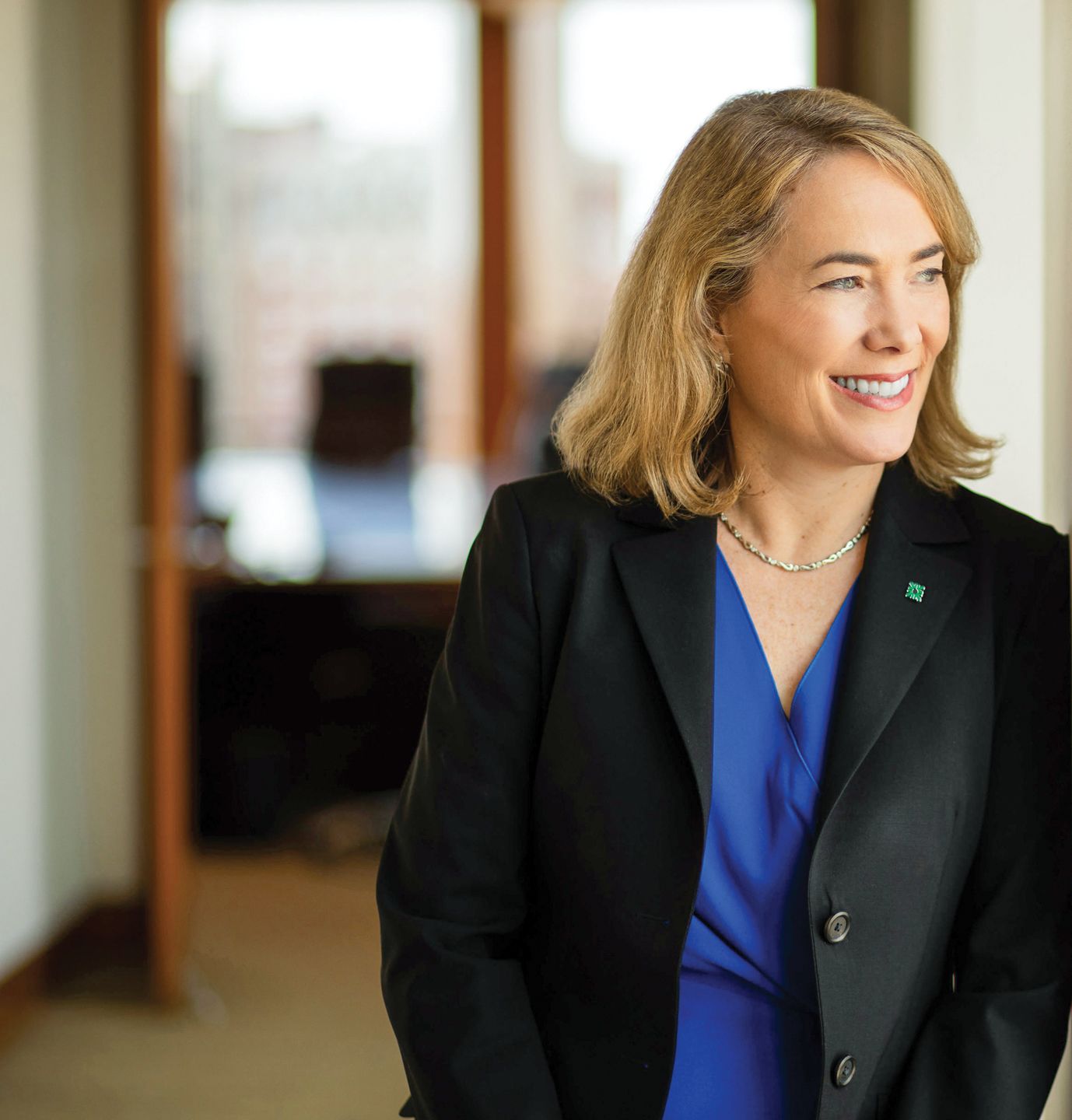
Business transformation
McEvoy was right: It would take a little longer than two years for Citizens to finally post a double-digit return on tangible common equity.
Still, Citizens finally crossed that mark in the third quarter of 2017 — and it hasn’t looked back since. For this year’s third quarter it posted a return on tangible common equity of 12.44%. Meanwhile, its efficiency ratio, which was hovering near 70% five years ago, is now below 60%, and earnings per share have beat consensus estimates from analysts in 20 consecutive quarters.
Rising rates and the cuts to corporate income tax rates have helped, but the steadily improving performance is largely a result of strategic decisions made by Van Saun and his team, McEvoy said.
“Within the targeted loans they are looking to grow, they are growing,” he said. “Within the targeted fee businesses — capital markets, wealth management, mortgages — they are beginning to grow. The numbers are showing improving trends and market share gains.”
Under McCree’s leadership, commercial loans are growing at a rate of about 6% a year, to nearly $42 billion at Sept. 30, as Citizens has hired lending teams in the Southeast, Texas and California, built a syndicated lending division and expanded into new areas of lending, including energy, health care, gaming and private equity.
Citizens also has built up its capital markets capabilities, acquiring two boutique M&A advisory firms, and greatly enhanced its trading, cash management and hedging functions, all with an eye toward attracting larger clients.
“We were narrow in terms of our product set,” McCree said. “We needed more sophisticated capabilities … to basically be able to solve all of our clients’ problems.”
The myriad efforts to scale up the commercial bank have helped Citizens double its number of mid-corporate clients — those with annual revenue of $500 million to $3 billion — to about 900 since 2014. Its base of middle-market clients — those with revenues of $25 million to $500 million — has increased by 50%, to about 3,000, according to Van Saun.
On the consumer side, growth has been driven largely by innovation. A student loan refinancing product Citizens pioneered has helped to more than triple its portfolio of education loans in the last five years, to $9.5 billion, while its point-of-sale financing for iPhone upgrades and Vivint and ADT home security systems is fueling strong gains in unsecured personal loans.
Van Saun said that the point-of-sale loan program grew out of a relationship Citizens had with Apple to finance purchases of laptops for students. Apple approached Citizens about offering the service, so the bank built a point-of-sale tool that allows customers to finance iPhone purchases on the spot in Apple stores or on the tech giant’s website, paving the way for similar arrangements with other merchants.
The bank saw point-of-sale lending “as an opportunity to move into a marketplace where there was very little competition,” said Brad Conner, Citizens’ vice chairman of consumer banking.
The service is not just benefiting consumers, it’s also helping retailers sell more products because “we’ve created an experience that’s incredibly easy,” he added.
Still, as proud as Van Saun is of the loan growth and improved financial metrics, he takes just as much pride in Citizens’ improved score on the Organizational Health Index, a metric developed by McKinsey that measures a company’s leadership, culture and employee engagement.
When the survey was first administered to employees, in 2015, Citizens’ OHI score was 59 (out of 100), well out of McKinsey’s top tier. Citizens has since put in a robust new “people program” that emphasizes leadership training and development, recognizes excellence across the organization and removes bureaucracy that Van Saun said was was preventing good ideas from being implemented.
Four years later, the OHI score is now at 72, putting Citizens just one point out of McKinsey’s top quartile. “You have to have an engaged and motivated colleague base if you are going to do a great job on customer service and experience,” Van Saun said. “When I think about my legacy, when I finally pack it in, I hope what people say about me is that I was committed to developing talent and having a great culture that’s focused on the customer.”
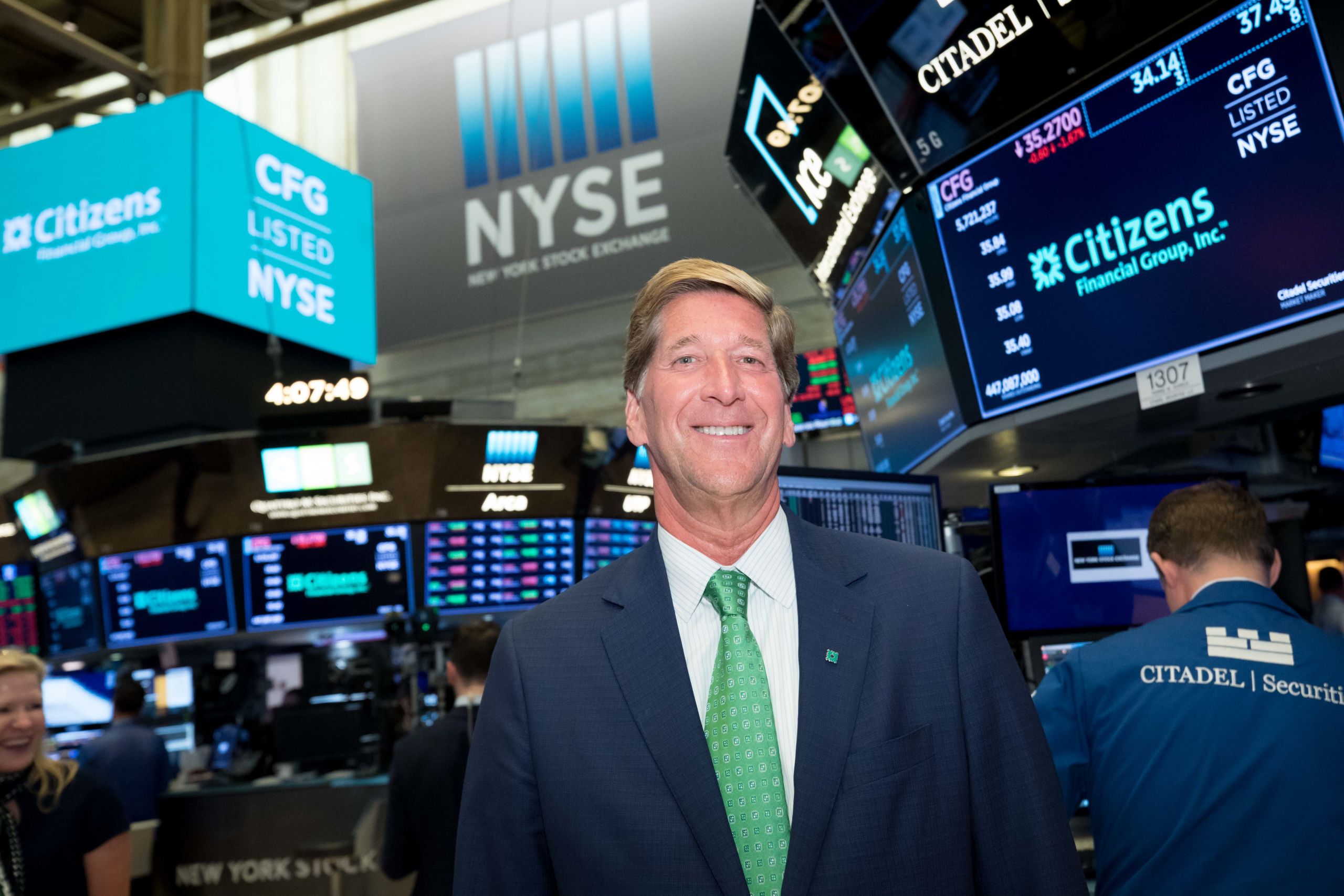
“When I think about my legacy, when I finally pack it in, I hope what people say about me is that I was committed to developing talent and having a great culture that’s focused on the customer," Van Saun says.
“When I think about my legacy, when I finally pack it in, I hope what people say about me is that I was committed to developing talent and having a great culture that’s focused on the customer," Van Saun says.
The making of a CEO
Van Saun has made a career of tackling tough challenges.
Before succeeding Ellen Alemany as Citizens’ CEO, Van Saun served as finance director at Royal Bank of Scotland, where he worked closely with CEO Stephen Hester to lead what was nothing less than the largest corporate turnaround in history.
Before that, he was a longtime chief financial officer at Bank of New York, where he helped lead its transformation from a regional bank to a custody bank and then became a key architect of its landmark merger with Mellon Financial.
His leadership skills were evident from an early age. Growing up in northern New Jersey in the 1960s and 1970s, Van Saun was that kid who organized Olympic-like competitions for his friends during summer breaks and that athlete who relished taking the big shot or being at bat with the game on the line.
He was also a standout student, having grown up in a household that stressed academic excellence.
“Sports were fun and you learned good lessons from sports, but they couldn’t be the be-all and end-all,” said Van Saun, who majored in accounting at Bucknell University and later received a master’s degree in business administration from the University of North Carolina. “You had to do well in school.”
His first job out of business school was in New York, doing financial analysis and strategic planning for General Mills’ nonfoods businesses, which at the time included fashion, toys and specialty retail.
In the mid-1980s, the company decided to exit those businesses to refocus on food, and though Van Saun was offered a new role at the corporate headquarters in Minneapolis, he opted to look for new opportunities in New York instead.
He set his sights on financial services, a decision that was largely influenced by his admiration for his grandfather, Grant Van Saun, who years earlier had started the commercial real estate practice at the old Irving Trust Bank in New York.
He landed at the investment bank Kidder Peabody, which was looking for someone with Fortune 500 experience to bring discipline to its budgeting and financial planning. He was there for about five years, eventually becoming its controller, until Wasserstein Perella, the boutique M&A advisory firm founded by two of Wall Street’s most high-profile investment bankers, recruited him to be its chief financial officer. Van Saun was just 32 years old.
A few years later he was recruited again, this time by Deutsche Bank, which needed a North American chief financial officer to help it dramatically expand its U.S. investment banking presence, and then moved on to Bank of New York, where in 11 years as CFO he had a hand in about 100 mergers and acquisitions.
They included Bank of New York’s 2003 acquisition of Pershing, the stock-trade clearing unit of Credit Suisse First Boston, for $2 billion; the 2006 swap of Bank of New York’s consumer, small-business and middle-market banking businesses for JPMorgan Chase’s corporate trust operations; and the $16.5 billion acquisition of Mellon in 2007 that created the world’s largest custody bank.
Van Saun left about a year after the Mellon merger, because he wanted to run a business and didn’t see a path to ever becoming CEO at BNY Mellon. He was 51 at the time and Bob Kelly, the former Mellon chief who became CEO of the merged company, was just three years older.
He dabbled in private equity for a year and was pondering his next career move when he received a call from Hester in 2009 asking him to move to London to help rescue RBS. The company was 80% owned by the British government at the time, and the challenge for Hester and Van Saun was figuring out which assets to sell and which assets to keep as they sought to keep the business afloat and repay a portion of the roughly $60 billion taxpayers spent to bail it out.
“We’re bomb experts, and we have to be really careful about how we pull the wires out,” Van Saun recalled Hester as saying at the time.
Over a period of four years, RBS shrank its balance sheet by about $500 billion by selling off business lines and loan portfolios and taking its auto insurance subsidiary public.
At first, Hester and Van Saun gave little consideration to spinning off Citizens because “we valued diversification and wanted to have as many earnings drivers as we could to ultimately pay back the U.K. government,” Van Saun said.
But by 2013, with U.K. regulators pressing RBS to continue streamlining, the decision was made to turn Citizens into a standalone, publicly traded company with Van Saun at the helm.
At 56, he would finally become a CEO.
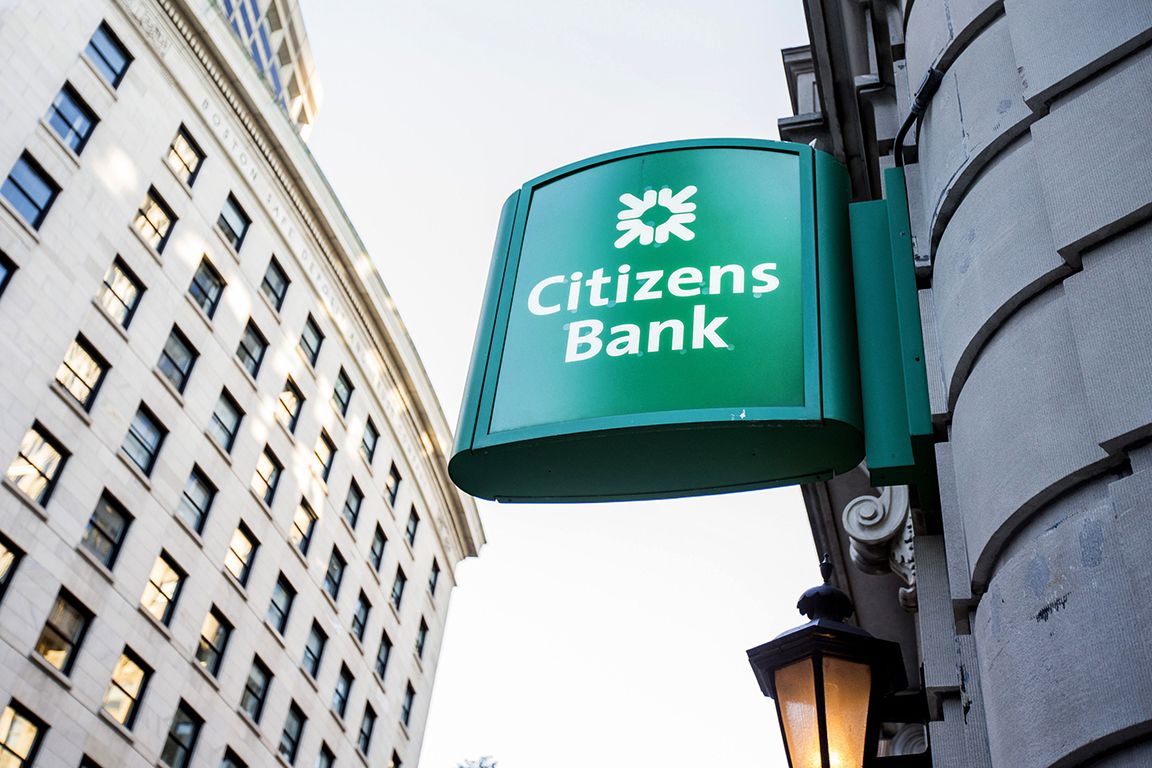
A sign outside a Citizens branch in downtown Boston.
A sign outside a Citizens branch in downtown Boston.
Future challenges
Six years in, his focus is on continuing to improve Citizens.
Van Saun acknowledged that a shortcoming in the consumer strategy is that point-of-sale loans and high-yield savings accounts at its digital bank are one-off products that aren’t really helping Citizens deepen relationships.
Among his top priorities is cutting expenses by about $300 million over the next two years and plowing some of the savings into technology and analytical tools that will help strengthen ties with those single-product customers.
Within the digital bank, for example, “we are trying to work through what would be a logical product bundle to expand us beyond just savings,” he said. “Checking is one, business savings is one, but are there other products, like digital mortgages, that we can put in a bundle and use data analytics to go after some of these one-product customers? There is a huge opportunity if we can get that right.”
Another high priority is improving its mobile platform, which Johnson, its head of virtual channels, said “was built back when the Motorola Razor was the No. 1 mobile phone in America.”
On the financial side, there is still room for improvement on Citizens’ key profitability metrics. Its return on tangible common equity may be climbing steadily but remains below peer-group averages in part because it’s still working through the excess capital accumulated while it was a unit of RBS.
“The capital normalization is probably still in the sixth or seventh inning,” said Brian Foran, an analyst at Autonomous Research.
Citizens’ stock trades at a slight discount to peers, and Foran said that could be because investors are unsure how all those new consumer and commercial loans will perform if the economy weakens.
Foran said the question he gets most from investors “revolves around how’s it going to play out when the environment gets tougher. Have they built themselves into a better bank that resembles peers, or have they overextended themselves?”
Foran, for his part, has an “outperform” rating on Citizens’ stock. As he sees it, the company “isn’t in hypergrowth mode” — it’s simply playing catch-up after years of underinvestment.
“A lot of this is just regaining market share and doing things other banks have been doing for 20 years,” he said.
Van Saun pointed out that the makeup of the balance sheet “is so much better than it was” before the financial crisis, when roughly 70% of its loans were to consumers. Today, its mix of consumer and commercial loans is much closer to 50-50.
"It’s taken us over a decade to get that balance sheet back to a size that allows us to achieve better levels of profitability," he said.




